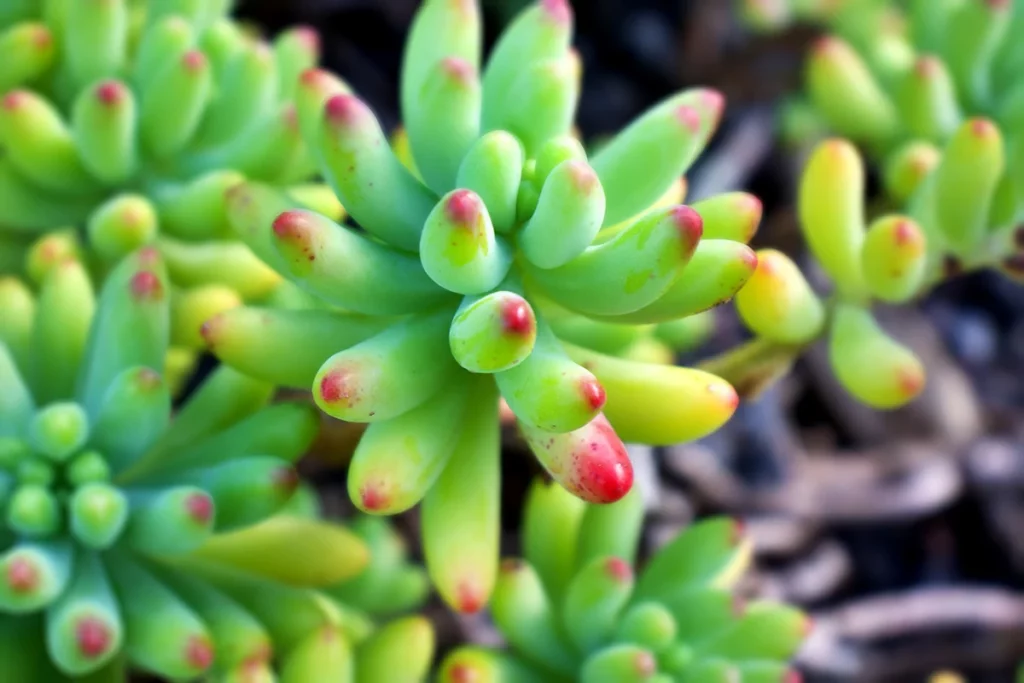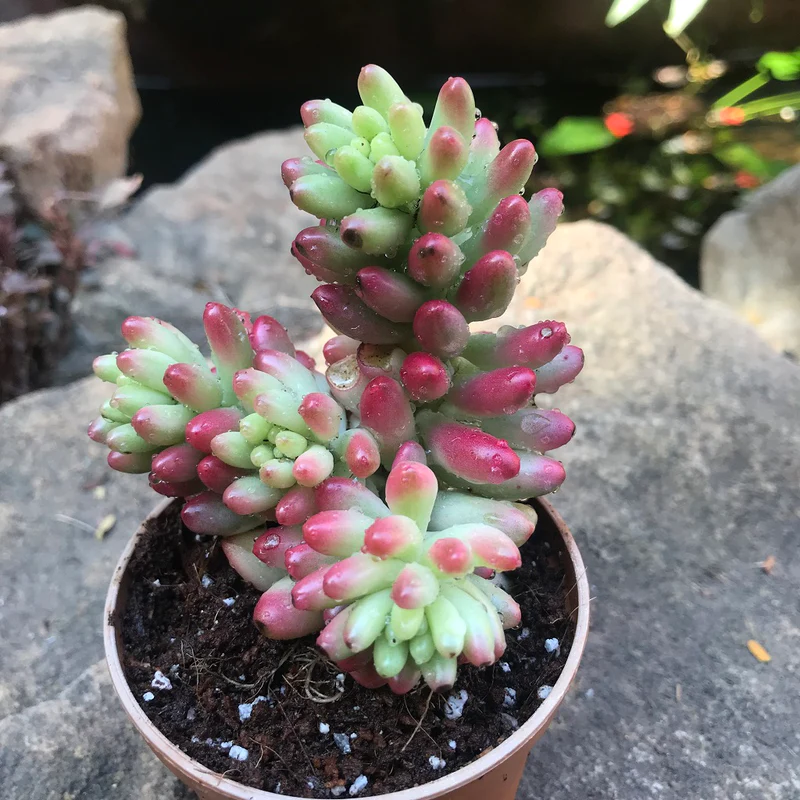
Sedum rubrotinctum, Pork and Beans more often called a jelly bean plant, is one of the many species found in the succulents family. The plant gets its nickname from its appearance. The green succulent features small chubby leaves that turn red or orange when receiving enough sunlight, making them look like small jelly beans.
Some greenness is a must for any home, and a few succulents around the house are a great way to accomplish that. Especially if you tend to be neglectful when it comes to plants, as caring for succulents is extremely low-effort.
If you’re thinking about propagating your jelly bean plant, you’ll be happy to know it’s a simple project! But what exactly does it involve?
How to propagate a Jelly Bean plant?
If you like the look of jelly bean plants, appreciate the low effort that they require, and want to have more than one in your home, there is no need to buy more than one! You don’t have to be an experienced gardener specialist to clone the plant. Jelly bean plants are easy to propagate – do that from stem cuttings or leaves. Having used both methods for new succulents, I can say that they both work. Finding out which technique works the best for you requires experimentation.
Jelly Bean plant propagation from leaves
Jelly beans drop their leaves here and there – it’s not usually a sign of an unmet need of the plant. Those leaves can be used to grow new plants! Alternatively, you can take leaf cuttings from the plant. But how do you remove the leaves and make them grow into a healthy succulent?
- If using a fallen leaf, inspect it to ensure it’s healthy-looking.
- To remove a leaf from the parent plant, gently twist it until it drops from the stem.
- Place the seed on top of a well-draining soil or potting mix. Don’t water the soil!
- Allow the leaf to receive bright but indirect sunlight.
- Water once the leaf has developed roots.
Whether you twist a leaf off a parent plant or use one that has naturally dropped, ensure that the leaf is in one piece and not broken or damaged. Using broken leaves can result in an unsuccessful propagation project.
Jelly Bean plant propagation from stem cuttings
Jelly beans are also propagated from stem cuttings. It’s a simple process that only requires a few minutes of your time.
- Pick out a stem on your parent plant that you’re going to remove. Ensure that it’s healthy!
- Grab a clean pair of scissors or a knife and snip the stem from the mother plant.
- Leave the cutting in a dry place for a day or two – this allows the cutting to callous over.
- Fill a container with a potting mix and plant your cutting.
- Place the container in a spot where it gets indirect sunlight. Water the cutting every few days. Use a misting bottle to avoid adding too much water.
- The stem cutting is ready to be repotted once it forms roots.
How to care for Jelly Bean plants?
If you tend to kill plants due to forgetting to water them daily or move them away from your windowsill on sunny days, succulents are a brilliant choice for you! Jelly bean plants require almost no effort and will not mind if you forget about them for weeks here and there.
Sunlight
Native to Mexico, these plants thrive in direct light. If you’re keeping your jelly bean in your garden or front porch, pick a spot where it receives at least 6 hours of bright sunlight. These succulents can handle full sun but appreciate a bit of shade. If your plant lives indoors, pop it on your windowsill – south- and west-facing windows work great. It is easy to monitor whether the succulent gets too much or too little sunlight

A plant that is green all over indicates it’d like more sunlight – however, jelly bean plants grown indoors rarely turn red. Plants that carry a lot of red or orange shade are a sign of heat stress. Jelly bean plants thrive in a hot environment. So if the temperature drops below 20 degrees in the winter, bring your plant indoors. The plant can’t handle freezing temperatures.
Watering
Succulents are used to dry environments and don’t tolerate too much moisture. So, using well-draining soil is essential.
As mentioned, jelly beans don’t like wet conditions, so don’t overdo it with watering. Let the soil dry out before showering it. Generally, watering once every couple of weeks is enough during cooler months. During hotter seasons, the plant could do with a bit of water every 7-10 days.
Fertilize
As a standard practice, you shouldn’t use fertilizers to your Jelly Bean plant. However, you can initiate fertilization only after the plant has been in the same pot and potting mix for over a year and exhibits signs of inadequate growth. In the event of repotting the plant in fresh potting soil, you can abstain from fertilization.
Soil
As with other succulent plants, a well-draining potting mix is used. Typically, a cactus mix is enough, with the addition of perlite. A 1:1 ratio of cactus mix and perlite is deemed suitable.
Frequently Asked Questions
Caring for a jelly bean plant involves limited watering. During warmer months, it’s good to give the succulents a light watering once every 7-10 days. During the cooler months, watering once every two weeks is good enough.
How to plant jelly bean succulents?
Choose a partly sunny spot, dig a hole in the soil and place your jelly bean in the soil. Fill it back up and lightly firm up the soil surface. That’s it!
Why is my jelly bean plant dying?
The most common cause for jelly bean plants dying is overwatering. Those succulents don’t want or need much water! The plant can also suffer due to underwatering or a lack of light.
Are green jelly bean plants edible?
No, absolutely not! These plants are toxic to both humans and pets. So, don’t try to eat them!